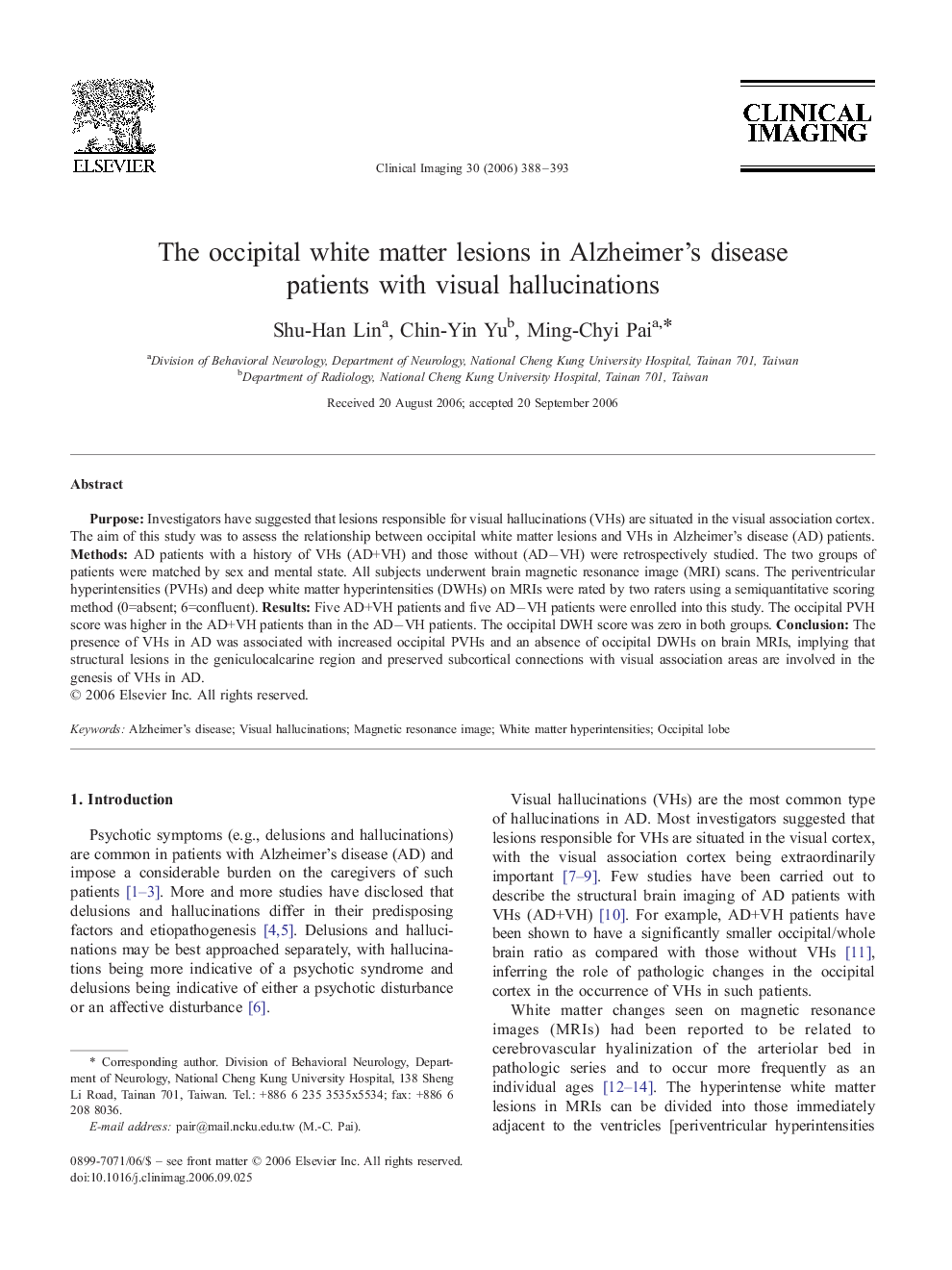| Article ID | Journal | Published Year | Pages | File Type |
|---|---|---|---|---|
| 4223137 | Clinical Imaging | 2006 | 6 Pages |
PurposeInvestigators have suggested that lesions responsible for visual hallucinations (VHs) are situated in the visual association cortex. The aim of this study was to assess the relationship between occipital white matter lesions and VHs in Alzheimer's disease (AD) patients.MethodsAD patients with a history of VHs (AD+VH) and those without (AD−VH) were retrospectively studied. The two groups of patients were matched by sex and mental state. All subjects underwent brain magnetic resonance image (MRI) scans. The periventricular hyperintensities (PVHs) and deep white matter hyperintensities (DWHs) on MRIs were rated by two raters using a semiquantitative scoring method (0=absent; 6=confluent).ResultsFive AD+VH patients and five AD−VH patients were enrolled into this study. The occipital PVH score was higher in the AD+VH patients than in the AD−VH patients. The occipital DWH score was zero in both groups.ConclusionThe presence of VHs in AD was associated with increased occipital PVHs and an absence of occipital DWHs on brain MRIs, implying that structural lesions in the geniculocalcarine region and preserved subcortical connections with visual association areas are involved in the genesis of VHs in AD.
